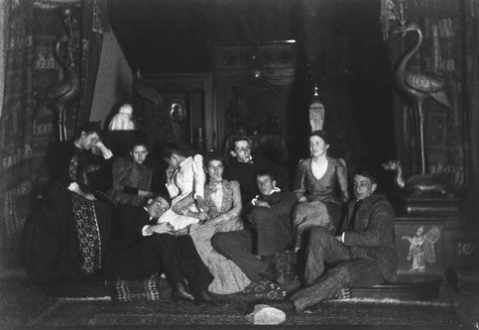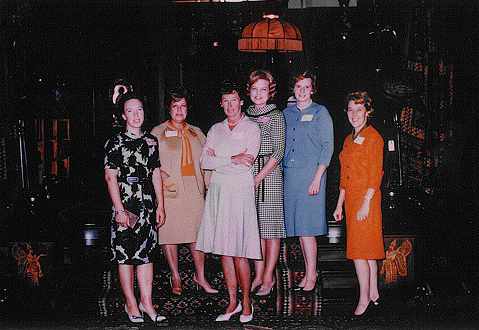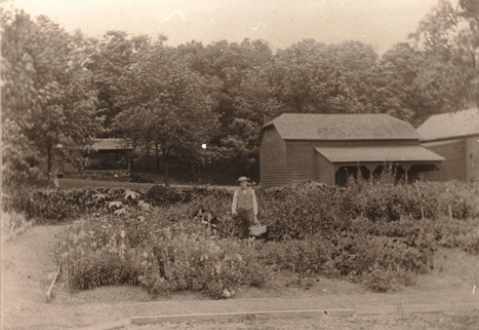A Taste of History
Elizabeth Schanz, Education Coordinator with Valerie Balint, Associate Curator
“We have delicious things all out of our own gardens . . . and wonderful floating islands and such with Mexican dulces with odd names, forms of guava and nougat.” Guest and author Susan Hale writing from Olana, 1884
We are what we eat. Cliché . . . I know. However, when trying to understand a historical moment or individual we must pause to consider what was being consumed and the political and social implications of one’s cuisine.
This past summer while trying to get a better sense of Frederic Church and his family’s daily life at Olana, I began asking questions about the food and drinks served in the home. I was immediately pointed to speak with Valerie Balint, The Olana Partnership’s Associate Curator. As a social historian and classically-trained cook, Valerie has dedicated a portion of her work over the past 15 years at Olana researching the collection of letters revealing the social lives and personalities of the Church family, the handwritten and newspaper-clipped receipts assembled by Olana’s servants (today referred to as recipes), and the dining and drinking customs of the 19th century. Over the past several years she and her colleague NYS Curator Amanda Massie have presented numerous public lectures and food tastings at museums and conferences related to dining in Church’s era.
As Valerie and I began chatting, she provided me with such a wealth of information that I knew it needed to be shared; I wanted to infuse her expertise into a program which would allow our public audiences to understand the Church family in a whole new way. . .through their taste buds. This was the birth of The Tasty History Series—a sequence of programs where Valerie and Amanda will set the historical stage for an evening of sampling of treats made by Chef Julie Gale, owner of At the Kitchen Table Cooking School, paired with creative cocktails invented by Marianne Courville, owner of The Hudson Standard. In honor of Olana’s 50th Anniversary, the series has been split into three programs to celebrate three distinct and pivotal years in our history—1872 the year the house was built at Olana, 1966 the year the house was saved from destruction, and 2016 celebrating 50 years of accomplishment, as well as future plans—restoration, exhibitions and education. Our desire is to evoke entertaining at the Church family home, and in the greater Hudson Valley— to illustrate historic trends and continuums—while giving people a chance to enjoy a yummy and fun evening at Olana.
Our first call to action was to create a menu in collaboration with our historical documents and Chef Julie. We began our initial research by poring through the pages of a menu planning book of printed clippings likely compiled by Jane the cook, who served the Church family for over 20 years. We also reviewed some of recipes given to the Churches by their friends and family such as caramel custard from the wife of Mr. Church’s patron William Henry Osborn, and calves liver “á la mode” from the home of the sculptor Erastus Dow Palmer—never fear—we did not select that as one of our inspirations! While looking over these 19th-century culinary treats, some may find it hard to believe that we found a recipe for spaghetti sauce which called for a few teaspoons of curry; however, Indian food was commonplace in the era in part due to our fascination with Queen Victoria and her Empress of India designation in 1877. As a result exotic spices were all the rage and were frequently integrated into western dishes.
Together we created a list of ingredients that were used repeatedly throughout the book; we also paid special attention to the myriad fruit and vegetable crops grown on Olana’s farm. Certain ingredients, such as cow’s tongue were left out despite being a family delicacy, but other ingredients appeared so frequently they could not be ignored— sorrel being an unexpected example. We also considered the types of foods which might have been served at the numerous soirees held to help raise funds to save Olana in the 1960’s and thought about the renaissance of “food to table” taking place in our region right now.
Sitting down with Chef Julie with the list, she was able to riff off of it to create three separate delicious menus, all of which get at the heart of each specific era. At each program, guests will get to make and taste three hors d’oeuvres and a dessert; for example, for dessert during the 1966 program Chef Julie will be serving a Jell-O mold made with wine. (Although you may think of Jell-O simply as a short-lived fad in the 1960’s and a démodé dessert . . . you are mistaken! You will have to come to the program to learn about rich historical significance of this sweet, jiggly substance.)
After Chef Julie completed the menus, we passed them along to Marianne who paired two alcoholic beverages for each program. One of our personal favorites from her menu is the Gentleman’s Punch, a lemon, rum and wine punch which is being served at the first program celebrating 1872 (punches were extremely popular in the 19th century, with roots tracing to Colonial America). This drink will be served with a fresh take on the recipe we found for “Humboldt Pudding,” a lemon tart with slivered almonds and apricot sauce. We found this recipe when we were on one of the final pages of the Church cookbook; and we knew it was something that had to be included since this year’s Sharp Family Gallery exhibition Capturing the Cosmosexplores the influence of the great German Naturalist Alexander von Humboldt on Frederic Church.
We hope these programs bring a bit of the nineteenth-century and mid-century back to life and that they inspire attendees to create some of their own culinary memories.




